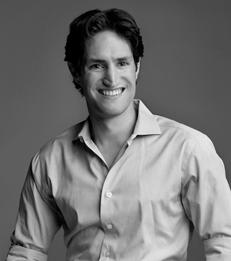Opinion
Does beauty drive economic success?
—


Pretty smiles and defined cheekbones count for something, but education ultimately turns out to be fairer than them all.
By Adam Alter
During the first debate before the 1960 Presidential election, Vice-President Richard Nixon looked so haggard that his mother called to ask if he was ill. His opponent, Senator John F. Kennedy, was relaxed, confident, and authoritative, and pundits were quick to declare Kennedy the victor. But not everyone watched the debate on TV, and some pollsters claimed that radio listeners preferred Nixon’s performance to Kennedy’s. This surprising reversal implied that TV viewers had been taken in by Kennedy’s good looks, whereas radio listeners assessed the candidates’ arguments on their merits, unclouded by the fog of physical appearance. That claim persists, though some researchers argue that the absence of reliable data makes it impossible to know whether TV viewers and radio listeners truly diverged.
Researchers today are no less interested in how physical appearance shapes political and economic outcomes. Half a century after Kennedy debated Nixon, the economist Daniel Hamermesh, from the University of Texas, coined the portmanteau pulchrinomics, the economic study of beauty. Hamermesh and his colleagues have produced a large body of research that is fascinating, if disconcerting: the basic principle of pulchrinomics is that beauty drives economic success. In a 1994 study, Hamermesh and the economist Jeff Biddle examined the income of several thousand U.S. and Canadian workers. When the workers were interviewed, in the late nineteen-seventies, the interviewers recorded their earnings and surreptitiously rated the attractiveness of their faces. Workers who were judged more attractive than average earned a five per cent premium over those of average attractiveness, who in turn earned about ten per cent more than those who were judged less attractive than average. The effect was slightly greater for men than for women, and the attractive members of both genders tended to pursue professions that capitalized on their looks. (James Surowiecki wrote about Hamermesh’s research in 2012.)
Read the full article as published in The New Yorker.
___
Adam Alter is an Assistant Professor of Marketing with affiliated appointment in the Psychology Department.
Researchers today are no less interested in how physical appearance shapes political and economic outcomes. Half a century after Kennedy debated Nixon, the economist Daniel Hamermesh, from the University of Texas, coined the portmanteau pulchrinomics, the economic study of beauty. Hamermesh and his colleagues have produced a large body of research that is fascinating, if disconcerting: the basic principle of pulchrinomics is that beauty drives economic success. In a 1994 study, Hamermesh and the economist Jeff Biddle examined the income of several thousand U.S. and Canadian workers. When the workers were interviewed, in the late nineteen-seventies, the interviewers recorded their earnings and surreptitiously rated the attractiveness of their faces. Workers who were judged more attractive than average earned a five per cent premium over those of average attractiveness, who in turn earned about ten per cent more than those who were judged less attractive than average. The effect was slightly greater for men than for women, and the attractive members of both genders tended to pursue professions that capitalized on their looks. (James Surowiecki wrote about Hamermesh’s research in 2012.)
Read the full article as published in The New Yorker.
___
Adam Alter is an Assistant Professor of Marketing with affiliated appointment in the Psychology Department.
